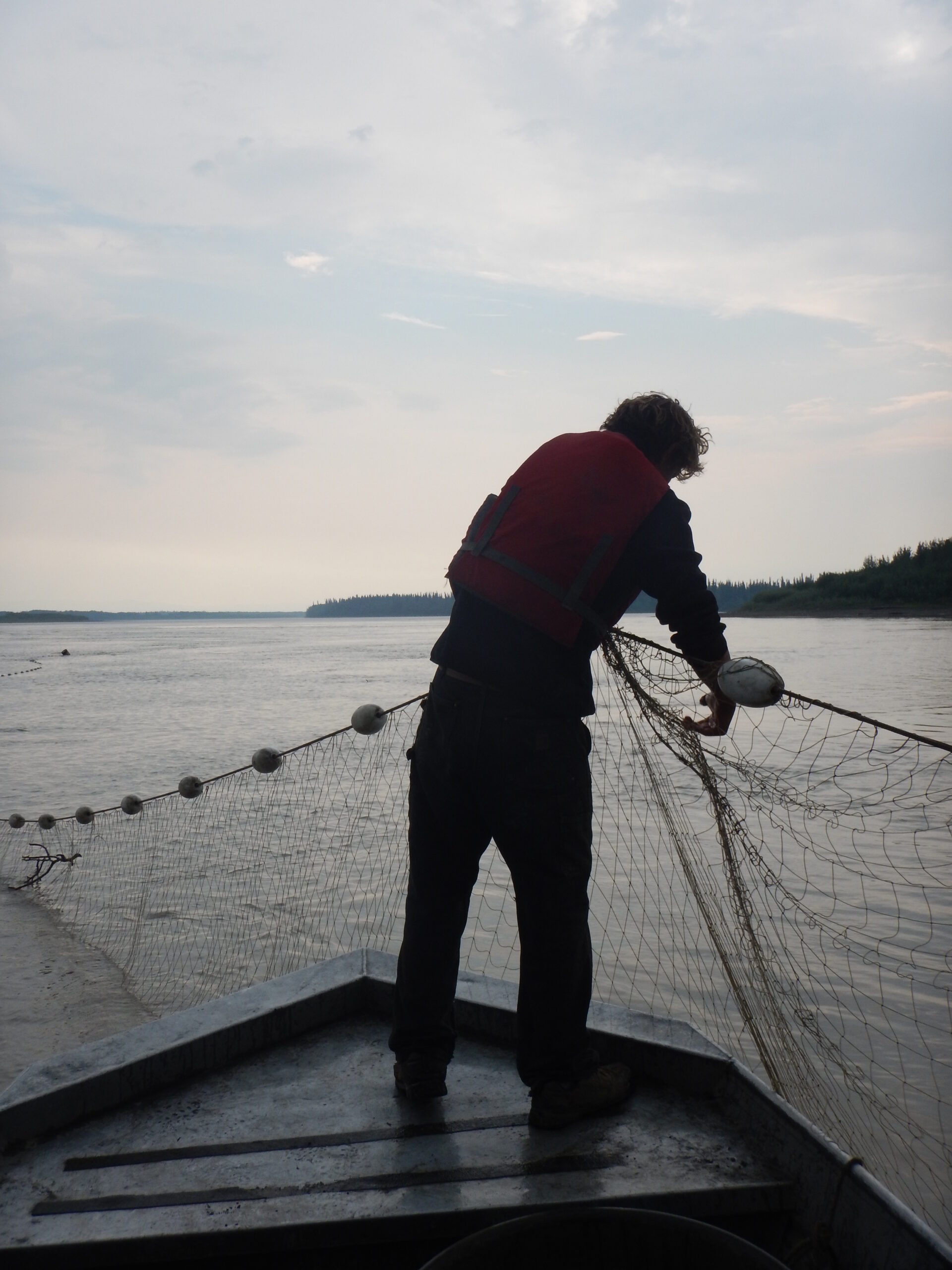Alaskan salmon have become smaller over the past half-century
December 2, 2020Oke KB, Cunningham CJ, Westley PAH, Baskett ML, Carlson SM, Clark J, Hendry AP, Karatayev VA, Kendall NW, Kibele J, Kindsvater HK, Kobayashi KM, Lewis B, Munch S, Reynolds JD, Vick GK, and Palkovacs EP. 2020. Recent declines in salmon body size impact ecosystems and fisheries. Nature Communications 11:4155.
In a nutshell
- Analysis of six decades of data shows that average body size of four of the five species of Pacific salmon native to Alaska is smaller today than in the mid-20th century
- Changes in body size are primarily the result of age structure and thus observed trends in declining size are best explained with changes in demography (age composition) and not growth (size within ages).
- This shift in salmon life history is attributed to climate forcing, increased competition over marine resources, changes in ocean conditions, and other, primarily human-associated factors
- Reduction in Pacific salmon size has far-reaching ecological, socioeconomic, and cultural implications that comprise significant challenges for future management and conservation
A new study published in Nature Communications reveals that the trends noted by Indigenous people, scientists, managers, and fishers within their own systems are not aberrations: Alaskan salmon are getting smaller throughout the entire state.
Analysis of body length of approximately 12.5 million fish derived from data collected by the Alaska Department of Fish and Game over the past 60 years revealed that four of the five salmon species native to the state – sockeye, coho, Chinook, and chum – have on average grown significantly shorter since the 1960s, with an especially sharp decline beginning around 2000–2010. Insufficient data were available to conduct a similar comparison for pink salmon, the fifth native species.
Differences in body length over time were not uniform across species, however. While sockeye, chum, and coho are now about 2–3 percent shorter than in the mid-20th century, Chinook – the largest-bodied of all species – are nearly 8 percent smaller than counterparts in the 1980s, equivalent to several inches in length. In some stocks, Chinook are as much as 10–20 percent smaller.
The results of the analysis indicated a clear link between smaller salmon size and their age at maturity. Across species, salmon are spending less time in the ocean and returning to their natal rivers at a considerably younger age, and consequently a smaller size.
Multiple potential causes of these changes were investigated by the authors, with most of the evidence pointing to changing conditions in the North Pacific Ocean due primarily to climate change and increased competition with wild and hatchery salmon – especially pink salmon, enormous numbers of which have been released in recent decades. Other predominantly human-caused dynamics played additional roles, but no single factor has emerged as the key driver pushing Pacific salmon toward smaller sizes.
“These changes seem to be due to the cumulative impact of a number of different forces that influence each species differently,” explains Krista Oke, a postdoctoral fellow at the University of Alaska Fairbanks and lead author of the study. “However, our study does show that both climate and competition at sea both influence salmon body size, although in complex and species-specific ways.”
Despite the absence of a clear underlying cause, that salmon are spending considerably less time at sea than in decades past points to two broad, though not mutually exclusive, possibilities: either they’re maturing at a faster rate than they used to for some unknown reason, or the ocean has become a far more dangerous place for a salmon to be, and thus the less time spent at sea, the better the chances of surviving and reproducing.
Reductions in salmon body size have also been reported in British Columbia and the US Pacific Northwest, although previous studies have been few and far between, and were of considerably smaller scope and encompassed much shorter time periods. Nonetheless, the findings of these studies suggest that the phenomenon is not unique to Alaskan stocks or freshwaters but rather is widespread along much of the West Coast salmon range.
Regardless of location, undersized salmon have potentially outsized ecological and socioeconomic consequences.
Due to their anadromous and semelparous life cycles, salmon act to subsidize freshwater ecosystems with the nutrients they have acquired at sea. On a per fish basis, smaller adults transport less organic and inorganic material from the ocean to natal watersheds, although changes in total abundance may mitigate or exacerbate this effect. Chinook salmon in particular have declined in both size and abundance.
Moreover, upon reaching spawning grounds, smaller females lay fewer eggs, potentially putting salmon populations themselves at greater risk.
“Reduced egg production could also impact predators of salmon eggs, but importantly it could negatively impact the productivity of salmon populations if fewer eggs results in fewer salmon in the next generation,” warns Oke.

Alaskan communities that depend heavily on subsistence fishing may be especially hard-hit by reductions in salmon size; here, a fisher checks a gillnet on the Yukon River, in southwestern Alaska. (Photo by Peter Westley)
Oke points out, however, that the potential socioeconomic impacts of smaller fish reverberate beyond the localized commercial interests of coastal communities and encompass nutritional and cultural concerns as well. “Salmon support important subsistence economies in areas throughout the state, and are often tightly tied to food security, cultural connectivity, and well being,” she says. “In some areas where salmon abundances are low, like Chinook salmon in the Yukon and Kuskokwim drainages, people will take fewer fish home, and each will be smaller than in the past.”
Gale Vick, a contractor with the Tanana Chiefs Conference, a consortium representing the tribal governments of Interior Alaska, and coauthor of the study, stresses that impacts related to changes in salmon populations become particularly magnified in Alaska’s Indigenous communities, such as those in the Arctic-Yukon-Kuskokwim (AYK). “This region has utilized salmon, especially Chinook and chum, as a dietary staple for millennia,” she says. “Food security is the essential issue for AYK residents, and loss of abundance in both run strength and average size of salmon has created extreme hardship, as replacing the lost protein isn’t easy. Commercial meat is prohibitively expensive in these remote communities, and more hunting increases pressure on local wild game populations.”
Moreover, because salmon play such a fundamental and central role in the social and cultural fabric of these communities, virtually any change in pattern will resonate deeply throughout the community, often in unexpected ways. As one example, Vick notes that the closing of fish camps situated along the rivers in this area has implications for local societies beyond meeting basic food needs. “Fish camps serve as multigenerational learning centers, where elders teach the necessary skills of catching, preserving, and conserving salmon. In addition, people travel up and down the river to socialize and discuss important issues at fish camps.”
Given that many, if not all, of the current trends believed to be responsible for these and other reported alterations in salmon life histories are unlikely to be reversed any time soon, addressing the problem of shrinking salmon poses enormous management and conservation challenges.
“Whether policies or regulations could lessen these impacts is a difficult question to answer,” Oke acknowledges. “However, it could be important to account for these changes and their implications in management decisions. Alaska salmon have a long history of sustainable management, but our study provides evidence that not only salmon abundance but also individual salmon traits, like body size and age, could be important considerations when it comes to population productivity.”
The results of this analysis add to the ever-growing body of evidence that human-driven changes in oceanic environmental conditions have altered Pacific salmon morphologies and life histories. Such adaptions come with significant – and often unanticipated – ecological, economic, and cultural repercussions, and may even pose grave threats to the overall fitness and survival of some salmon populations in future.
“Body size is declining across four species of salmon in Alaska, primarily because salmon are returning to spawn younger,” concludes Oke, “and these changes are likely already having real-world consequences for both the people and the ecosystems that rely on Alaska salmon.”
Science Spotlight by Ken Ferguson
